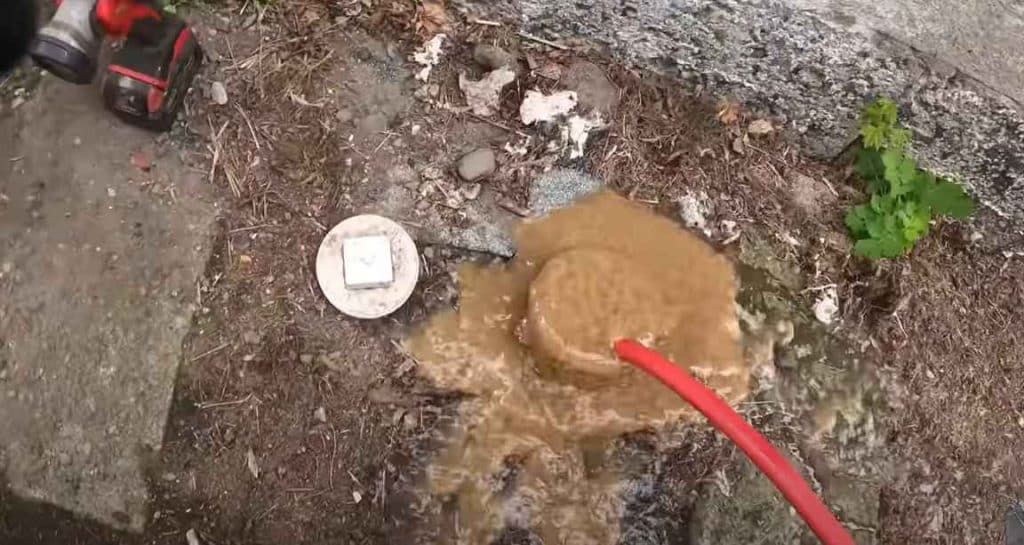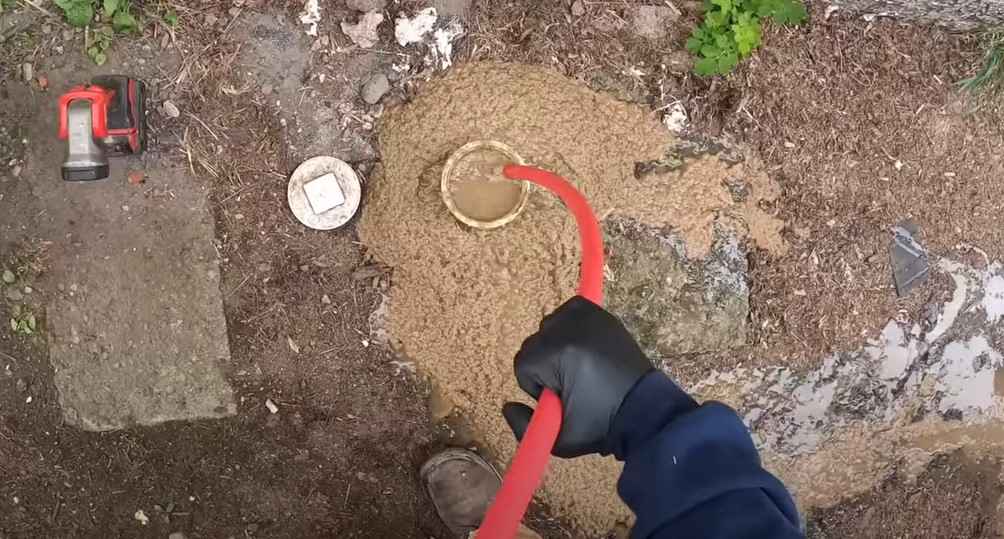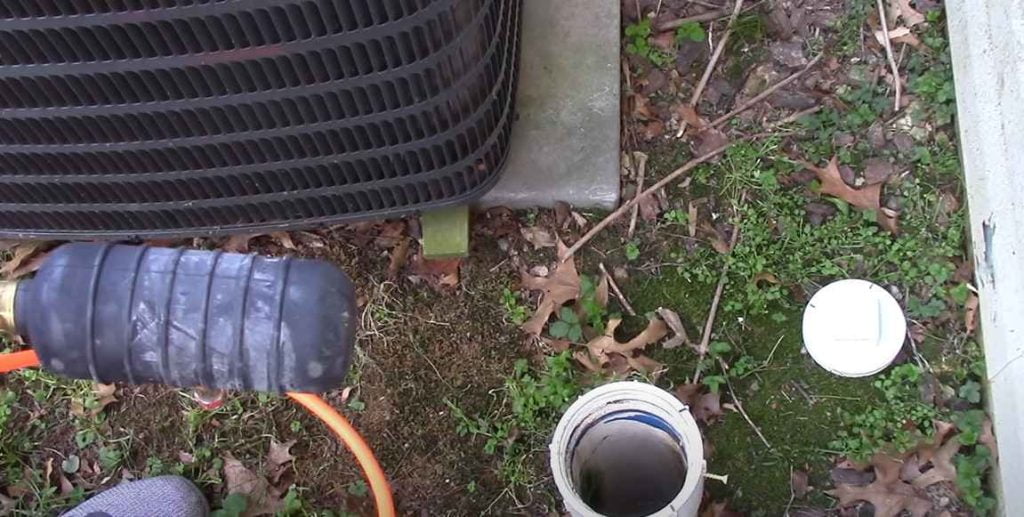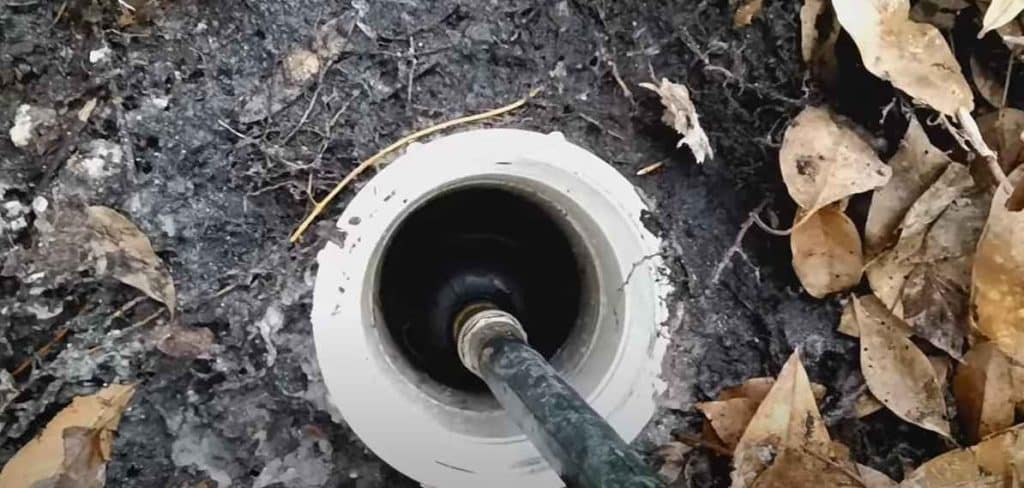To unclog a pipe full of dirt, first try flushing with hot water; if unsuccessful, use a plumber’s snake or a high-pressure hose. Avoid chemical cleaners as they may not be effective against solid blockages like dirt.
Unclogging a dirt-filled pipe can be a daunting task, but with the right approach, it’s certainly manageable. Homeowners and DIY enthusiasts often face the challenge of clearing pipes obstructed with soil, especially after heavy downpours or accidental spills during yard work.
The key is to tackle the clog without causing damage to the plumbing. Effective methods include manual removal using appropriate tools, as well as the application of force through water or air pressure.
Quick action is essential to prevent any potential water backing up, which could lead to more significant issues such as leakage or water damage. We will explore about “How to Unclog a Pipe Full of Dirt?”
Ensuring you have the right tools on hand before starting the process will streamline the task and save time. Keep reading to learn the step-by-step approach to safely and efficiently clear your pipes from stubborn dirt blockages.
Introduction To Pipe Clogs And The Prevalence Of The Issue

A clogged pipe is a common nuisance that can cause a lot of frustration. It can start as a minor inconvenience but has potential to escalate into a significant plumbing disaster. Understanding how clogs form and why they’re prevalent is essential for efficiently addressing the problem and preventing future occurrences.
Nature Of Pipe Clogs
Pipe clogs occur when a build-up of materials or sediment prevents water from flowing freely. Various substances, including dirt, leaves, and even small roots, can come together, creating a blockage. Over time, these materials can compact and become as hard as rock.
The Commonality Of Dirt-related Clogs In Plumbing
A dirt clog is not a rare event. These types of clogs are frequent in households and occur due to several reasons such as:
- Natural sediments in water
- Displaced soil from construction or heavy rain
- Broken pipes allowing in soil
Regular inspection and maintenance ensure water keeps flowing smoothly and prevents these common clogs.
Identifying A Clogged Pipe
Is your water running slow? Recognizing a clogged pipe is the first step to fixing it.
Let’s look at the signs and symptoms, and how to assess the severity and location of a dirt clog.
Signs And Symptoms Of A Dirt Clog
- Slow drainage in sinks or bathtubs
- Water back-up occurs when flushing
- Unusual gurgling noises from drains
- Bad odors coming from the plumbing
Assessing The Severity And Location Of The Clog
- Check multiple fixtures. If all are slow, the clog is main line.
- Use a drain snake or probe to locate the blockage.
- Observe water flow patterns for irregularities.
Understanding these elements can guide you to safely unclog your pipe.
The Causes Of Dirt Clogs In Pipes
Dirty pipes can mean trouble for homeowners. When pipes clog with dirt, water flow slows down. Sinks and tubs drain poorly. Fixing clogged pipes is key to a smooth-running home. Let’s uncover common causes of pipe dirt clogs.
Typical Activities That Can Lead To Soil Intrusion

- Gardening near pipelines: Digging can move soil into pipes.
- Home renovations: Building work can shake soil loose.
- Heavy rainstorms: Rain can wash soil into cracks.
External Factors Contributing To Dirt Accumulation In Plumbing
Pipe age: Older pipes crack, letting dirt in. Construction: Nearby work can push soil into lines. Tree roots: Trees grow into pipes, making openings for dirt.
Preparation For Unclogging A Dirt-filled Pipe
Preparation for Unclogging a Dirt-Filled Pipe begins with a clear plan and the right gear. If you want to tackle this common household problem, it’s crucial to set up correctly. Proper prep can turn a daunting task into a straightforward fix. Take these initial steps to ensure a smooth unclogging process.
Safety Measures And Tools Required For The Job
Before diving into the unclogging process, you need to prioritize your safety. Heavy-duty gloves and goggles are a must. These protect your hands and eyes from dirt and debris. Additionally, make sure to have these essential tools at hand:
- Plunger: A tool used to clear blockages by creating suction.
- Drain Snake: A flexible auger for dislodging clogs deep in the pipe.
- Bucket: To catch water or dirt that may spill out during the process.
- Garden Hose: Useful for flushing out loosened dirt.
- Towels: Keep your space dry as you work.
Turning Off Water Supply And Protecting The Work Area
Start by shutting off the water. This step prevents any extra water from compounding the issue. Locate the main valve and turn it clockwise to halt the water flow. Once the water is off, prepare your workspace:
- Place buckets under the pipe to catch spillage.
- Spread towels around the area to absorb any excess moisture.
With these preparations, you’re ready to unclog that stubborn, dirt-filled pipe safely and effectively.
Manual Removal Techniques For Dirt Clogs

Dealing with a clogged pipe full of dirt can feel daunting. Yet, with the right manual techniques, it’s a problem you can often solve yourself. Below, discover hands-on methods to clear that stubborn dirt and get water flowing smoothly again.
Using A Plunger To Dislodge Dirt
Sometimes, a simple plunger can work wonders on a dirt-clogged pipe. Follow these steps:
- Fill the sink with enough water to cover the plunger’s lip.
- Place the plunger firmly over the drain.
- Pump the plunger with forceful thrusts.
- Check if water drains to test for success.
Tip: For double sinks, seal the second drain for better pressure.
Hand-cleaning Accessible Pipes
If a plunger doesn’t clear the clog, try cleaning accessible pipes.
- Turn off the water supply.
- Place a bucket underneath to catch spills.
- Loosen the pipe joints with a wrench.
- Remove the pipes and manually extract the dirt.
- Rinse pipes with water before reassembling.
When pipes are back in place, run water to confirm the blockage is gone.
Chemical Solutions To Break Down Dirt Clogs
Are you facing slow drains because of dirt clogs? If water takes forever to drain, you might have a blocked pipe. Chemical solutions exist that can power through dirt and restore flow.
Choosing The Right Chemical Cleaners For Dirt
Not all cleaners work for dirt. Some target organic matter like hair or grease. For dirt, you need something specific.
- Enzymatic cleaners – They break down organic material in dirt.
- Oxidizing agents – These use oxygen to dissolve clogs.
- Check labels for ‘dirt dissolution’ or ‘earth-friendly’.
A table of commonly used chemicals can help.
| Chemical Type | Effect on Dirt |
|---|---|
| Enzymatic | Biologically decomposes dirt |
| Oxidizing | Dissolves and breaks down |
Safe Application Of Chemical Agents To Avoid Pipe Damage
Chemicals require careful use to avoid harming pipes. Follow these tips for safe application:
- Read instructions – Understand the application process.
- Wear protection – Use gloves and goggles for safety.
- Avoid mixing chemicals – It can cause dangerous reactions.
- Flush with water – Do this post-treatment to clean residue.
Remember, a gentle approach is key. Opt for agents that are safe for your pipes. This ensures a solution without damage.
Using Mechanical Tools To Clear Out Dirt
Welcome to our guide on Using Mechanical Tools to Clear Out Dirt. Pipes clogged with dirt can cause a major headache. Traditional methods like plunging might not work. This is where mechanical tools come in handy. These powerful devices can clear out tough dirt and restore your plumbing’s flow.
The Role Of Plumbing Snakes In Removing Dirt
A plumbing snake is a flexible auger used to dislodge clogs in plumbing. The snake is fed into the pipe until it reaches the blockage. By turning the handle, you can break up or retrieve the dirt causing the clog. Here’s how to use it:
- Insert the end of the snake into the pipe.
- Keep pushing until you feel resistance.
- Turn the handle to break apart the dirt.
- Pull the snake out to remove debris.
Plumbing snakes come in various sizes for different pipe diameters. Make sure you choose one that suits your needs.
High-pressure Water Jets For Effective Clog Removal
High-pressure water jets can cut through dirt with ease. They work by blasting water at high pressure into the pipes. This method is great for tough clogs. The steps include:
- Secure the jet’s hose into the pipe.
- Turn on the machine to release water.
- Move the hose back and forth for thorough cleaning.
Safety is key, so wear protective gear. Always follow manufacturer instructions.
| Tool | Use Case |
|---|---|
| Plumbing Snake | Small to medium clogs |
| Water Jet | Solid, stubborn blockages |
Technological Advances In Clog Removal

Clearing a pipe full of dirt is no small task. Thankfully, groundbreaking technology now makes this easier. Cutting-edge tools and machines transform the way professionals tackle clogged pipes. Homeowners benefit from faster, cleaner, and less intrusive methods.
Cctv Inspection For Accurate Clog Identification
Peering inside a clogged pipe has never been simpler. Closed-Circuit Television (CCTV) inspections lead the charge in diagnosing blockage issues. A flexible cable slides into pipes, sending real-time video footage to technicians. This reveals the dirt clog’s exact location and composition.
- Immediate visual access to pipes
- Precise clog detection
- Minimally invasive technique
Innovative Devices For Efficient Clog Handling
Today’s devices reach, grip, and remove clogs like never before. Hydraulic machines, air burst cleaners, and electromechanical cleaners stand out. These modern marvels apply force and finesse to clear pipes quickly and safely.
| Device Type | Function |
|---|---|
| Hydraulic Machines | Use high-pressure water to break apart dirt |
| Air Burst Cleaners | Release air forcefully to dislodge clogs |
| Electromechanical Cleaners | Rotate cleaning heads to cut through debris |
Each tool or machine is designed for specific clog challenges. They bring unparalleled efficiency to what was once a daunting task. With these innovations, no clog stands a chance.
Preventive Measures And Maintenance Tips
Preventive measures and maintenance are key to keeping your pipes free from dirt clogs. A little foresight can save you from the hassle and expense of unclogging a dirt-filled pipe down the road. Let’s explore some best practices to prevent future dirt clogs and establish regular cleaning and inspection routines.
Best Practices To Prevent Future Dirt Clogs
- Install strainers in sinks and showers to catch debris.
- Use flush guards in toilets to prevent inappropriate items from being flushed.
- Avoid planting trees near underground pipes to prevent root intrusion.
- Direct downspouts away from your home’s foundation to prevent pipe saturation.
- Cover soil pipes during construction or renovation to prevent dirt entry.
Regular Cleaning And Inspection Schedules
Maintain a consistent cleaning routine to keep pipes in optimal condition. Below is a simple schedule to follow:
| Frequency | Action |
|---|---|
| Weekly | Check strainers and clean out debris. |
| Monthly | Flush drains with hot water to clear build-up. |
| Biannually | Inspect for leaks or signs of wear. |
| Annually | Schedule professional inspections for main lines. |
Proactive measures prevent clogs and maintain pipe health. Regular inspections identify potential issues early. Together, these practices keep your plumbing system flowing smoothly.
When To Call A Professional Plumber
At times, a clogged pipe full of dirt is more than a simple DIY fix. Understanding when to seek help from a professional is key for preventing bigger issues. Let’s explore signs indicating it’s time to call a plumber and the advantages of their services for stubborn clogs.
Determining The Complexity Of The Clog
- Water backs up: When water doesn’t drain, you might have a serious blockage.
- Gurgling sounds: Strange noises from your pipes suggest a clog’s complexity.
- Bizarre odors: A persistent bad smell could mean a significant blockage.
- Repeated clogs: If clogs are common, the problem is likely complex.
Should these issues arise, consult a professional plumber to assess the pipe’s condition.
Benefits Of Professional Plumbing Services For Persistent Issues
| Benefit | Description |
|---|---|
| Expertise | Professionals have the knowledge to diagnose and fix complex clogs efficiently. |
| Tools | Specialized tools like plumbers’ snakes reach deep clogs without damaging pipes. |
| Time-saving | Plumbers resolve issues quickly, saving homeowners time and hassle. |
| Guarantee | Work done by a professional comes with a service guarantee. |
If your efforts to unclog a pipe don’t work, professional help is the best solution. They can prevent further damage and save long-term costs.
Frequently Asked Questions Of How To Unclog A Pipe Full Of Dirt
Can Vinegar Dissolve Dirt In Pipes?
Vinegar can help dissolve minor dirt accumulations in pipes. Its acidity breaks down some organic materials. However, for heavy blockages caused by dirt, professional plumbing methods may be more effective.
What’s The Best Way To Clear A Dirt Clog?
To clear a dirt clog, first remove as much debris as possible manually. Then, flush the pipe with a mixture of hot water and dish soap, or use a plumber’s snake. For stubborn clogs, seek professional assistance.
How Often Should Pipes Be Cleaned To Prevent Clogs?
Regular maintenance can prevent clogs. Cleaning household pipes every 3 to 4 months with hot water flushes and natural cleaners like baking soda can help maintain clear pipes.
Does Baking Soda And Vinegar Unclog Pipes With Dirt?
Baking soda and vinegar can effectively clear mild drain blockages. The chemical reaction can dislodge some dirt accumulations. For more severe clogs, additional methods like snaking or hydro jetting may be necessary.
Conclusion
Unclogging a pipe full of dirt doesn’t need to be daunting. With the right tools and techniques, you can easily restore flow. Remember to wear protective gear and proceed with care. For persistent blockages, don’t hesitate to call a professional.
Keep pipes clean to prevent future clogs and maintain a smooth-running system.

